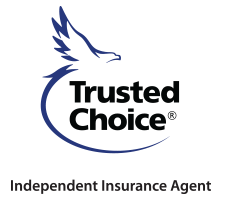Advice For Parents of Teenage Drivers

Learning how to drive is an exciting milestone for many teenagers and often a source of worry for their parents. This concern is more than warranted; teens drive less than other age groups, yet the number of crashes and fatalities for them is disproportionately high—nearly four times the rate of drivers 20 years and older. This underscores the important role that parents play in reducing the risk of terrible outcomes by supporting their teens as they learn safe driving practices.
Auto accidents involving young drivers are often more severe and therefore more likely to necessitate coverage from a personal excel liability policy, also known as an umbrella policy. This coverage can offer protection for accidents once the underlying limits of the auto policy are met.
Unsurprisingly, distracted driving, particularly when a cell phone is involved, is a common cause of accidents involving young drivers. Others causes simply reflect teenagers' lack of driving experience.
Parents play the most important role in building safe, skilled young drivers by setting a good example and discussing safe driving practices with their teens. Plan a series of practice sessions with your teen driver that include a wide variety of situations where you can provide guidance, such as driving at night and in bad weather. Continue to teach and supervise your teen as they graduate from a learner’s permit to a license.
Talking about safe driving with your teen is important but to take it a step further, you can also ask them to agree to safe driving and get it in writing with a parent-teen driving agreement. This can help ensure that your young driver hears you and helps them understand the rules of the road, plus the potential consequences of breaking them.
Restrict Teenage Passengers
Studies have shown that the crash risk for teen drivers increases when there are teenage passengers in the car. Passengers can easily distract a new driver, and their presence may also lead to greater risk-taking. The best policy is to always restrict teen passengers.
Restrict Night Driving
The most severe teen crashes occur between 9 pm and midnight. Night driving requires more skill behind the wheel and even teens who usually follow safe driving practices can be at risk. Setting restrictions around unsupervised driving after 9 pm can help increase safety.
Limit Driving In Bad Weather
While inclement weather makes driving more dangerous for everyone, teen drivers are more likely to lack the experience to react safely in poor conditions. Limit your teen’s unsupervised driving in severe weather until they gain more experience.
Enroll In Driver's Education
Enrolling your teen in a driver safety course is a great way to help them learn safer driving techniques in a controlled environment.
Choose A Safer Vehicle
The best vehicle for your teen is one that reduces their chances of crashing and offers protection from injury. Although they may be drawn to smaller-sized or high-performance vehicles, these introduce dangerous risk factors: small cars don’t offer the ideal protection during collisions, and inexperienced drivers can easily lose control of high-performance vehicles.
Emphasize The Importance Of Seat Belts
Teens and young adults have the lowest seatbelt use rate in the U.S. Just because your teen wears their seat belt while you are in the car doesn't mean it will be worn when they are driving alone or with peers. Insist that every member of your family gets into the habit of wearing a seat belt, even in the back seat or during very short trips.
Nearly 50% of teenage auto fatalities in the U.S. happen in the summer between Memorial Day and Labor Day, according to Cambridge Mobile Telematics, as teens often enjoy more freedom and are more likely to be driving with young passengers during the summer months. Parents should be even more cautious during this time, keeping in mind the importance of restricting night driving and passengers.
Technology That Supports Safe Driving
Since the middle of the 20th century, innovation has improved outcomes when it comes to auto accidents. Ralph Nader’s monumental work around seatbelts led to the National Highway Traffic Safety Administration and then the implementation of airbags.
Today, there is no shortage of technology and innovations that help to foster a safer driving experience for teens. According to a 2021 study by the Insurance Institute for Highway Safety, safe-driving technology has the potential to prevent up to three-quarters of deadly crashes where teen drivers are involved.
Another auto safety study of in-vehicle monitoring technology found that young drivers are more likely to adjust their driving behavior if their parents were notified of instances of risky driving. In-car features like those offered by Buick™, Cadillac™ and Chevrolet™ allow parents to program limitations on speed and location. There are also many apps that help your teenager resist distractions like text messages and music. We recommend researching these devices and apps before deciding which one may fit your family's needs best.
Our experienced agents at Lisa Broadbent Insurance are available to assist with your teen driver’s insurance needs. Call a representative at Lisa Broadbent Insurance at
(302) 731-0044 and discuss your options.





















